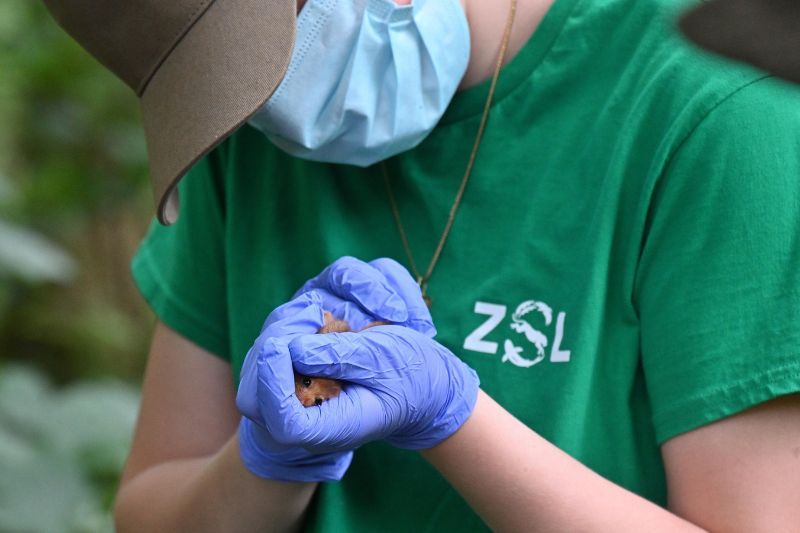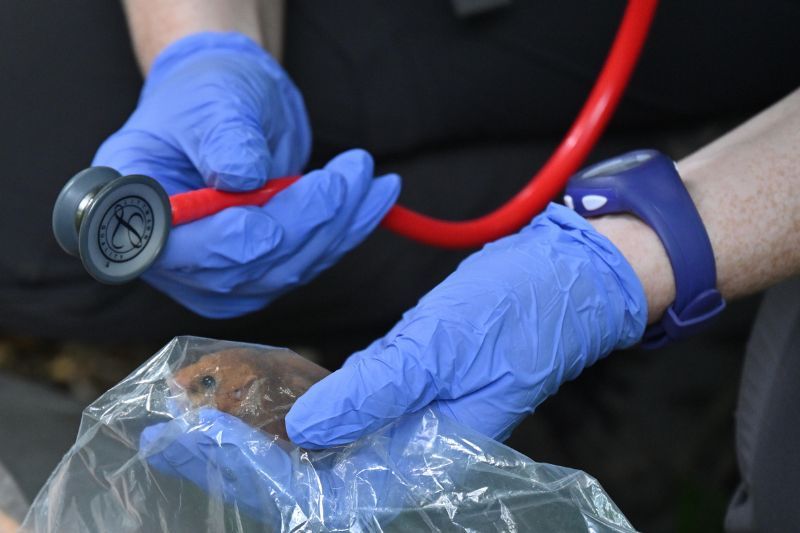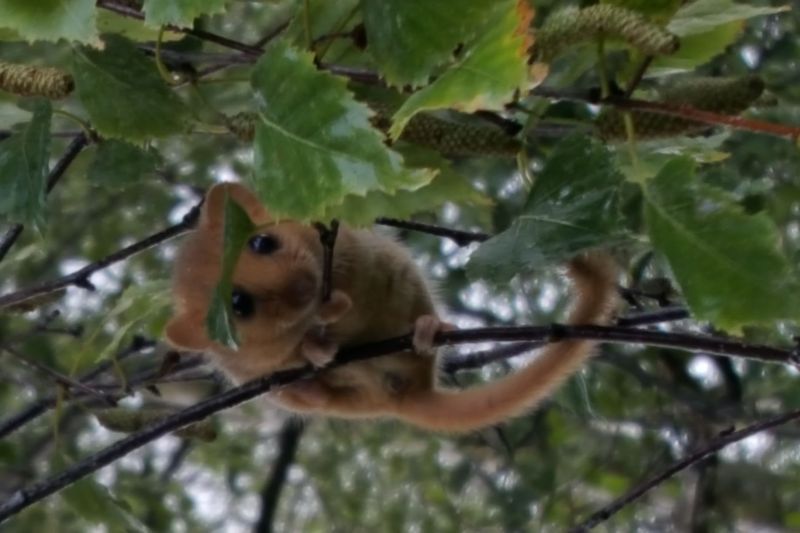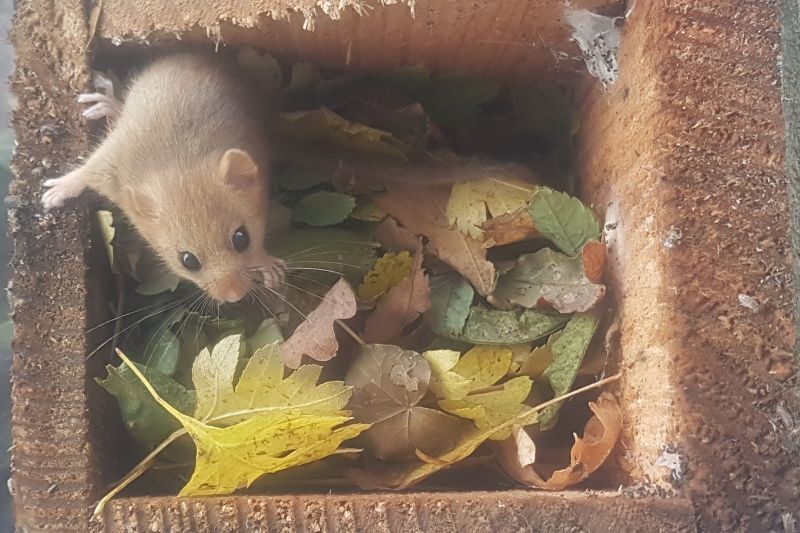This June, we successfully released 38 healthy captive-bred hazel dormouse into a woodland on the Calke Abbey estate in Derbyshire. We reintroduced this new population of dormice in collaboration with Wildwood Trust, London Zoo ZSL and Paignton Zoo.
Checking nest boxes for dormice
As part of our dormouse reintroductions each year, we work with trained volunteers and licensed handlers between July and October to check the nest boxes for signs of breeding, and to record how the dormice are doing in their new wild home.
At the first box check, the volunteers recorded 10 adult dormice and a litter of babies, their eyes still closed. In the second check, lots of fresh nests were found as well as three adults in breeding condition. And in September, seven mature dormice, including two independent juveniles, were found. One of the adults was also recorded with a litter of young with their eyes open.
The discovery of new litters – as well as the many nests – shows signs of breeding, which is excellent news. Additionally, finding independent young dormice shows that the dormice born in the woods over the summer have already begun supporting themselves and are thriving in this habitat.
Finding new litters brings hope
At our final box check of the season, we found that the newly released dormice in Calke Abbey have fully settled into their new home. Our volunteers recorded five dormice, three of the dormice originally reintroduced, and two juveniles, which shows that they continue to breed. Good news!
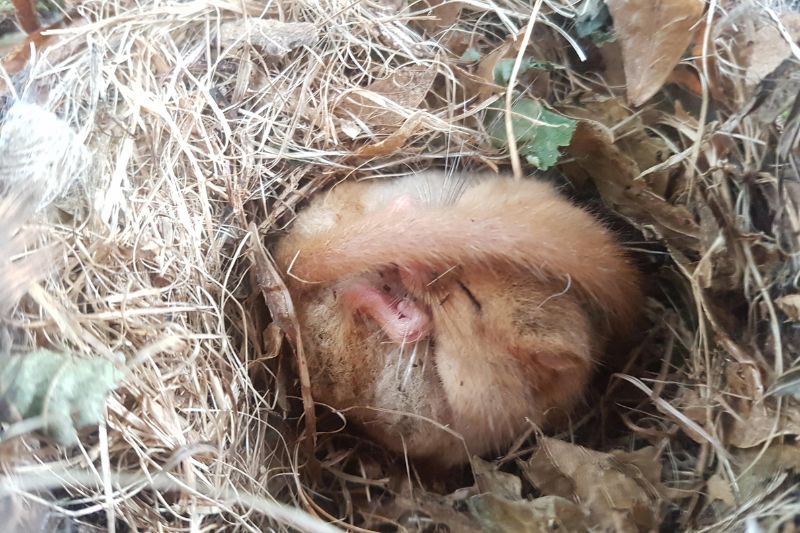
The National Forest, where Calke Abbey is located, is a diverse woodland boasting oak, hazel and honeysuckle. These provide habitat and food for the dormice, many of whom have now dispersed into the wider woodland.
Elsewhere at National Dormouse Monitoring Programme (NDMP) sites, we’ve had some more really positive news. We usually don’t check nest boxes for the NDMP so late into the season, but this year, we continued checking boxes through November and were pleasantly surprised by what we found. In one area of Briddlesford – the PTES nature reserve on the Isle of Wight – we recorded 15 dormice in 186 boxes, which is much higher than numbers usually recorded in November. At another woodland on the Island, the numbers last month were even greater, with 63 dormice recorded in 180 boxes. Most of the animals seen were juveniles, suggesting a very successful breeding season – just a bit delayed, perhaps due to the mixed weather that we’ve seen.
At this time of year, many animals like to huddle together in the same box, and we found six boxes housing three dormice, two boxes with five dormice, and a box each of six and eight dormice! It is so encouraging to see so many healthy dormice, especially as we head into winter.
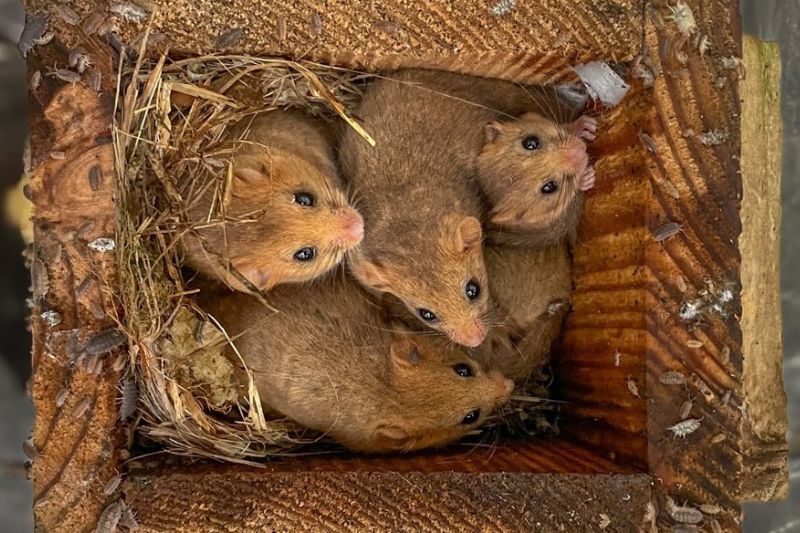
Plans for our 2024 reintroduction are already underway, and we look forward to sharing more news in the new year.
Thanks to everyone who supports our dormouse conservation work, we couldn’t do this without you!
To find out more about PTES’ dormouse conservation work, visit ptes.org/dormice.

